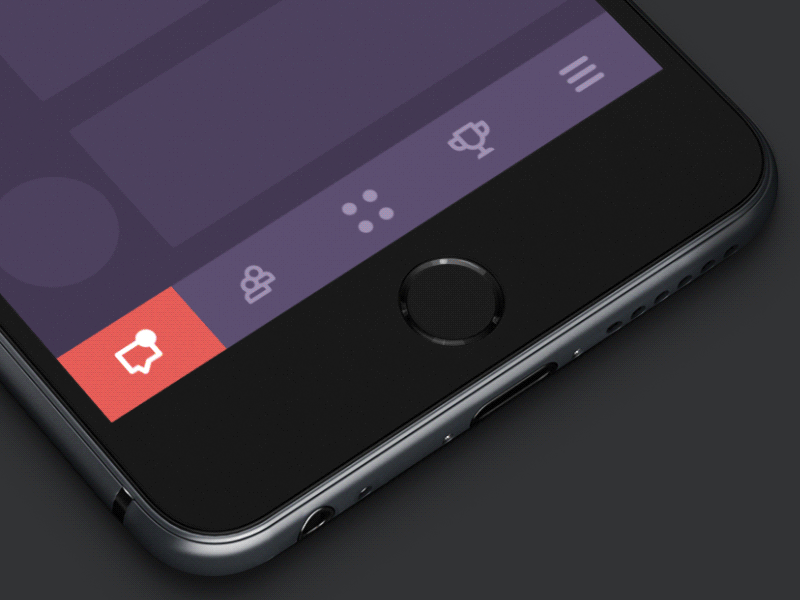Data-Driven Design: Approaching UX with Musical Intuition
5 MIN READ
05/09/2017 | Human-Centered Design

When it comes to User Experience (UX), a data-driven design approach is a smart and savvy way to evolve a website, app, or any other digital product. It not only sets the rhythm of the experience; it follows the beat of the users—what they feel, think, and do. In the same way that DJs and music producers remix beats, combine melodies, and shift genres, UX strategists and designers harness the power of data to measure the pulse of its audience and remix the product accordingly to produce a smash hit.

The choice of genre depends on user behavior.
Similar to how playlists contain different genres, websites and apps have a different intended purpose for every section. The success of that purpose depends heavily on user reactions and human emotions.
When you want to get users excited about your website or app, you start off with some hard-hitting rock n’ roll—a riveting, thrilling home page. As they move into a more narrative section, like the About page or a Case Studies page, you’d like to channel a little classical to allow them to focus. On the Blog page, you want to be mentally stimulating and cater to your readers’ sense of creativity, so you take up a playful jazzy vibe. On the Services or Solutions page, you would want to apply pop sensibilities—what’s new, what’s catchy, what’s popular—to evoke a sense of novelty and relevance. The Order/Checkout page should feel clean and simple, yet substantial like country; gripping, yet flexible like hip-hop and RnB. Finally, when they reach the Contact page, you want to create an inviting feel, so you channel the whir of trance music.
Listen, then remix. UX architects and designers listen to the pulse of data to determine if the desired human reactions are being met and if certain elements need to be changed for the product to become more appealing. It’s all about producing a hit that’s deserving of a People’s Choice Award.

Data is the structure; innovation is the hook.
One of the common misconceptions of a data-driven design approach is that it limits the space that designers play around with. On the contrary, what makes data-driven design truly effective is that it allows the design team to go beyond trends and best practices to develop a unique solution that answers specific problems for specific users. Data influences; data doesn't dictate. When your conversion rate decreases after a redesign experiment, it doesn’t mean that you should ditch the effort altogether. The same applies if the rate increases. Data does not necessarily indicate success or a failure. Rather, it provides perspective—the foundation of your design intuition.

A data-driven design approach allows you to pinpoint the rationale behind a new idea. If you’re a product owner, you may want to redesign your landing page. One reason may be because you want to modernize the look and feel. A better reason would be because data shows that users aren’t understanding the calls-to-action so there is a high drop-off rate. It's easy to use a hamburger menu to consolidate navigation, however, data from usability tests reveal that target users do not always understand that three horizontal bars mean ‘MENU’. Data backs up your design hypothesis and supports your desire to innovate, which makes this approach especially beneficial when seeking the approval of metrics-driven executives and decision makers.
Big Data drops the beat, but qualitative data sets the rhythm.
In the era of Big Data, nearly every digital interaction can be measured by a numerical value: engagement, visitor count, drop-off rate, user demographics, bounce rate, flow of action, and other user behaviors. The plethora of data makes it easy for you identify who your users are, where they come from, when they use your product, and how they interact with it. These analytics also help organizations identify patterns and trends.
#MetroStarMinute: Business Intelligence & Analytics
But qualitative data—non-numerical information gathered through surveys, user testing, consumer research, and other forms of observation—is just as measurable and empirical as quantitative data. In fact, it often has a bigger influence on design-related decisions. Analytics can determine the what, when, where, and how; qualitative data tells you why. Why do people drop off at a certain page? Why do they find the current design iteration difficult to navigate? Why do they stay on your homepage? Qualitative data can provide specific, and, more importantly, human answers to these questions.
Since user experience is typically tailored to user behavior, design-related decisions are largely based on the narrative behind the numbers rather than the numbers themselves. Remember: Big Data is king, but qualitative data is queen and she’s got a pretty big say.
User-business harmony creates a catchy melody.
While data allows you to leverage users’ needs, the key to success is to maintain a good balance between what matters to the user and what matters to the business. For example, data insights reveal that your email subscription form pop-ups are negatively impacting user drop-rates. However, increasing the email subscription rate is one of the organization’s critical success metrics.
It’s a tough balancing act, but conversion is not always a direct result of the user experience. Rather, it is a reward that the organization reaps when the user deems the design intuitive, engaging, and ultimately rewarding. Data-driven design allows you to identify the sweet spot that creates a harmonious balance between user needs and business needs.

User empathy makes a hit.
UX teams do not design for themselves. Ultimately, the objective of data gathering and analysis for UX is to gain a sense of empathy for what users want. Even the most seasoned strategists and designers cannot make assumptions about the target user’s experience without the influence of both quantitative and qualitative data. UX is fundamentally a user-centered practice, where user opinion is the end-all, be-all. If your design does not give your crowd what they want, then it’s not a hit.
With data-driven design, you can create an intuitive digital product that’s a hit with your users—loved by the audience, always on repeat, and ranking high on the charts. The People’s Choice Award is the one what you want to win, and in the world of UX, that's the only one that matters.
#MetroStarMinute: Design Thinking
With data-driven design, data-informed design, or data-influenced design, you can create a digital product that results in popstar-caliber success—your users love to use your product, and at the same time, your organization achieves its critical metrics.
.png?width=150&name=Jason%20Stoner-square%20(2).png)
Written By:
Jason Stoner
Sr. Director of Transformation
you might like these too
Accelerating UI Development with MetroStar's Comet and AI
AI/ML | Human-Centered Design | Innovation Lab
Delivering Real-Time Insights for Faster DoD Mission Planning
MetroStar Culture | Human-Centered Design | Innovation Lab
Five 2024 GovCon Tech Trends: Perspectives from Six Industry Experts
Enterprise IT | Feature | Cyber | AI/ML | Human-Centered Design
want to stay in the loop?
Never miss a thing by signing up for our newsletter. We periodically send out important news, blogs, and other announcements. Don’t worry, we promise not to spam you.
